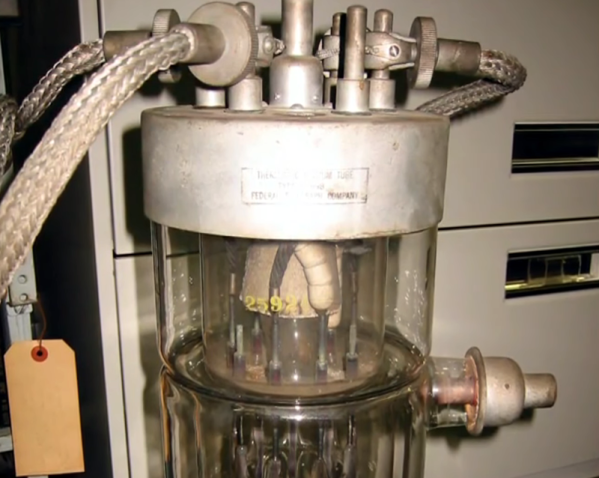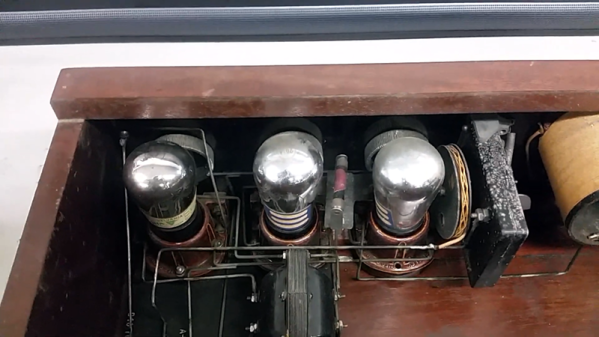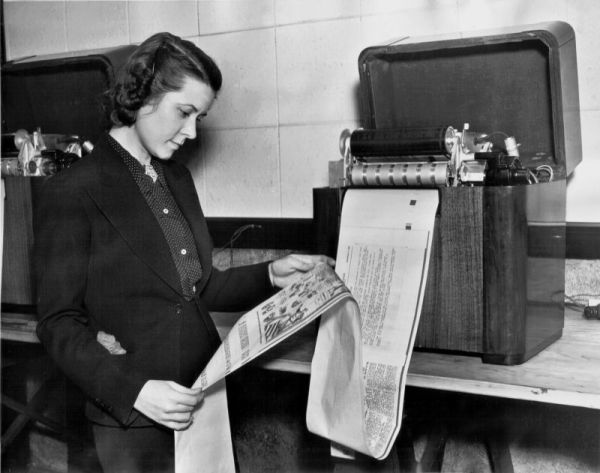Crosley was a famous name in radio for more than one reason. The National VOA Museum of Broadcasting has a video telling [Powel Crosley Jr.’s] story, and the story behind the 500 kW WLW transmitter. WLW was an AM broadcast station often called the nation’s channel since its signal covered most of the United States. The first Crosley station was identified at 8CR, running 20 watts from [Crosley’s] living room. Quite a modest start! By 1922, he had moved to his family business location along with 500 watts of output. Over the years, WLW got more powerful until it was finally a 500 kW giant.
Crosley5 Articles
2023 Cyberdeck Challenge: Crosberry Pi Loves Lo-Fi Hip Hop
As far as we can tell, the only real selling point that any portable record player offered was, well, its portability. To be clear, the sound is never that great. But perhaps a selling point for this crowd is that they usually come in hinged cases with handles, and you know what that means — cyberdeck that thing!
[Mx. Jack Nelson] started gutting this Crosley CR40 record player to make a Raspberry Pi housing, but it quickly turned into a cyberdeck project with the addition of a 10.1″ portable monitor, a Planck ortholinear keyboard, and a gutted trackball mouse.
We love that [Mx. Jack Nelson] made use of the Crosley’s original speakers — this was the wife’s idea! — as well as the volume and tone knobs. But our favorite part has to be the clear acrylic top that both protects the electronics and provides a platform for the keyboard and mouse buttons. Be sure to check out the demo video after the break.
Continue reading “2023 Cyberdeck Challenge: Crosberry Pi Loves Lo-Fi Hip Hop”
1938 Radio Has Awesome Dial
[Mr. Carlson] is truly an old radio surgeon. The evidence? He recently restored an 83-year-old DeForest radio by transplanting an identical chassis from another similar radio. The restoration is fun to watch, but the 7D832 radio dial looks amazing. The dial is very colorful and the wooden knobs and preset selector are beautiful. To seal the deal, the center of the dial has a magic eye tube, giving the radio a retro high tech look.
The donor chassis needed some work before the surgery. In addition, [Carlson] makes some improvements along the way. The radio showed signs of previous service work, which is not surprising after 83 years.
Odd Crosley Radios From The 1920s
You may sometimes see the Crosley name today on cheap record players, but from what we can tell that company isn’t connected with the Crosley Radio company that was a powerhouse in the field from 1921 to 1956. [Uniservo] looks at two of the very early entries from Crosley: the model VIII and the XJ. You can see the video of both radios, below.
The company started by making car parts but grew rapidly and entered the radio business very successfully in 1921. We can only imagine what a non-technical person thought of these radios with all the knobs and switches, for some it must have been very intimidating.
Retrotechtacular: Electronic Publishing In The 1930s
We are living in the age of citizen journalism and the 24-hour news cycle. Reports about almost anything newsworthy can be had from many perspectives, both vetted and amateur. Just a few decades ago, people relied on daily newspapers, radio, and word of mouth for their news. On the brink of the television age, several radio stations in the United States participated in an experiment to broadcast news over radio waves. But this was no ordinary transmission. At the other end, a new type of receiver printed out news stories, line drawings, and pictures on a long roll of paper.
Radio facsimile newspaper technology was introduced to the public at the 1939 World’s Fair at two different booths. One belonged to an inventor named William Finch, and one to RCA. Finch had recently made a name for himself with his talking newspaper, which embedded audio into a standard newspaper in the form of wavy lines along the edges that were read by a special device.
Continue reading “Retrotechtacular: Electronic Publishing In The 1930s”















